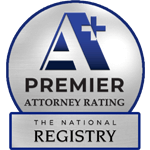Transportation in Oregon is a necessity, but if you had to buy your car with less than optimal financing, even if you have been making your payments on time, you could find yourself in serious trouble. Sometimes, in order to get a customer into a new car, the dealership’s finance department may offer a loan that extends over several years, and after three or four years of payments, this has the potential to leave you owing much more than the vehicle is worth. At The Law Office of Kim Covington, our team frequently assists people who want to know what their options are for dealing with a negative equity vehicle loan.
According to Edmunds.com, your alternatives in this situation depend on whether you want to keep your car or not. For example, if it has a problem that makes it unreliable, you may be in a position where you have to get a new one, even though you still owe money. In this case, a car dealership may suggest rolling the balance of the loan into a loan on a new car. If you want to keep the vehicle, though, you may want to consider refinancing it.
When you are going through circumstances that make it difficult for you to maintain the payment, your lender may offer you options such as new loan terms, or a forbearance. However, you should not wait until you have already missed payments before calling, as repossession becomes a stronger likelihood after three months or more.
If financial hardships are threatening to strip you of your vehicle, bankruptcy may be another way to get right side up again. A Chapter 13 bankruptcy may allow you to make reasonable payments that you can afford for a set amount of time. Filing for Chapter 7 may relieve you of unsecured debts that were preventing you from affording your vehicle, allowing you to make the payments and keep it, or it may be an option to have it liquidated and be free of the problem entirely. More information about vehicle debt is available on our web page.



